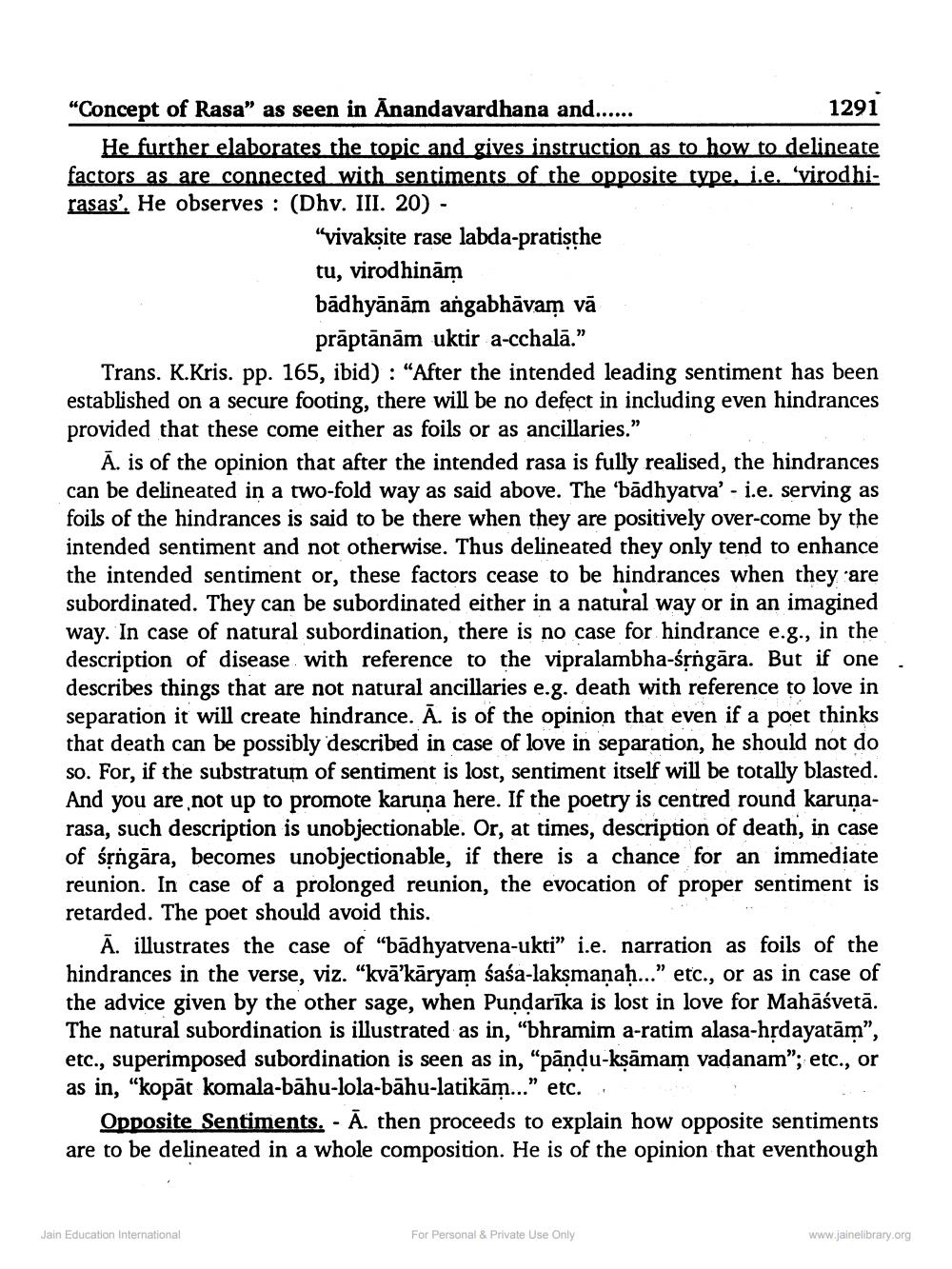________________
"Concept of Rasa” as seen in Anandavardhana and......
1291 He further elaborates the topic and gives instruction as to how to delineate factors as are connected with sentiments of the opposite type, i.e. 'virodhirasas'. He observes : (Dhv. III. 20) -
"vivakṣite rase labda-pratisthe tu, virodhinām bādhyānām angabhāvam vā
prāptānām uktir a-cchalā." Trans. K.Kris. pp. 165, ibid) : "After the intended leading sentiment has been established on a secure footing, there will be no defect in including even hindrances provided that these come either as foils or as ancillaries."
Ā. is of the opinion that after the intended rasa is fully realised, the hindrances can be delineated in a two-fold way as said above. The 'bādhyatva' - i.e. serving as foils of the hindrances is said to be there when they are positively over-come by the intended sentiment and not otherwise. Thus delineated they only tend to enhance the intended sentiment or, these factors cease to be hindrances when they are subordinated. They can be subordinated either in a natural way or in an imagined way. In case of natural subordination, there is no case for hindrance e.g., in the description of disease. with reference to the vipralambha-śrógāra. But if one describes things that are not natural ancillaries e.g. death with reference to love in separation it will create hindrance. Ā. is of the opinion that even if a poet thinks that death can be possibly described in case of love in separation, he should not do so. For, if the substratum of sentiment is lost, sentiment itself will be totally blasted. And you are not up to promote karuna here. If the poetry is centred round karunarasa, such description is unobjectionable. Or, at times, description of death, in case of śrngāra, becomes unobjectionable, if there is a chance for an immediate reunion. In case of a prolonged reunion, the evocation of proper sentiment is retarded. The poet should avoid this.
Ā. illustrates the case of "bădhyatvena-ukti" i.e. narration as foils of the hindrances in the verse, viz. "kvā'kāryam sasa-laksmanah..." etc., or as in case of the advice given by the other sage, when Pundarīka is lost in love for Mahāśvetā. The natural subordination is illustrated as in, "bhramim a-ratim alasa-hrdayatām”, etc., superimposed subordination is seen as in, "pându-ksāmam vadanam"; etc., or as in, "kopāt komala-bāhu-lola-bāhu-latikām..." etc.
Opposite Sentiments. - Ā. then proceeds to explain how opposite sentiments are to be delineated in a whole composition. He is of the opinion that eventhough
Jain Education International
For Personal & Private Use Only
www.jainelibrary.org




